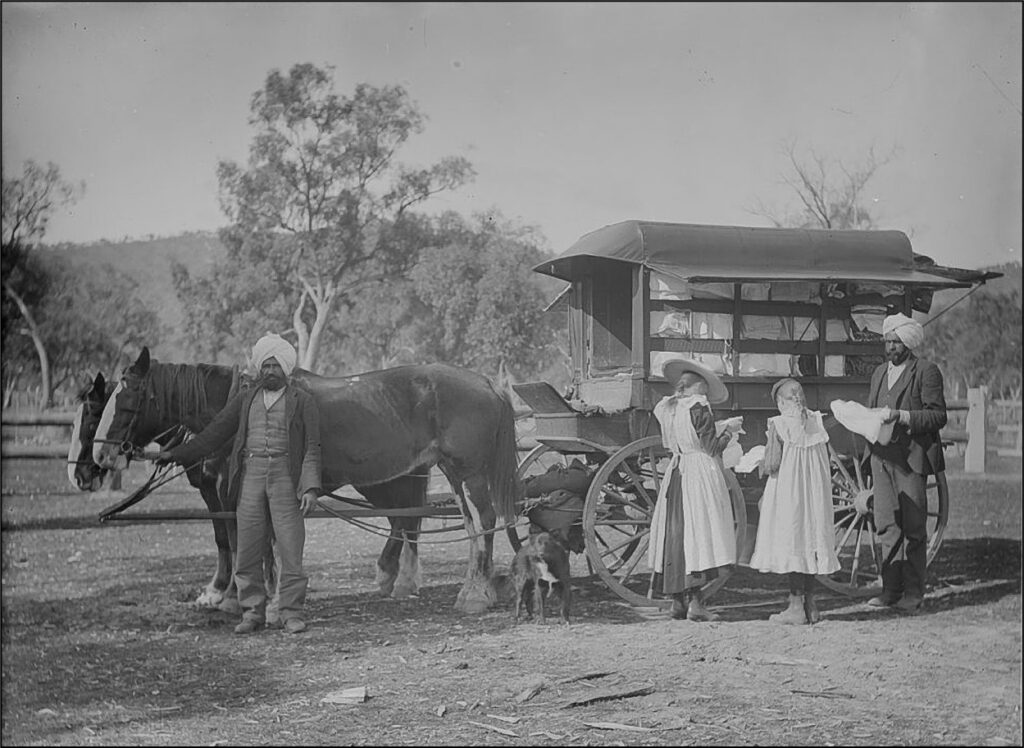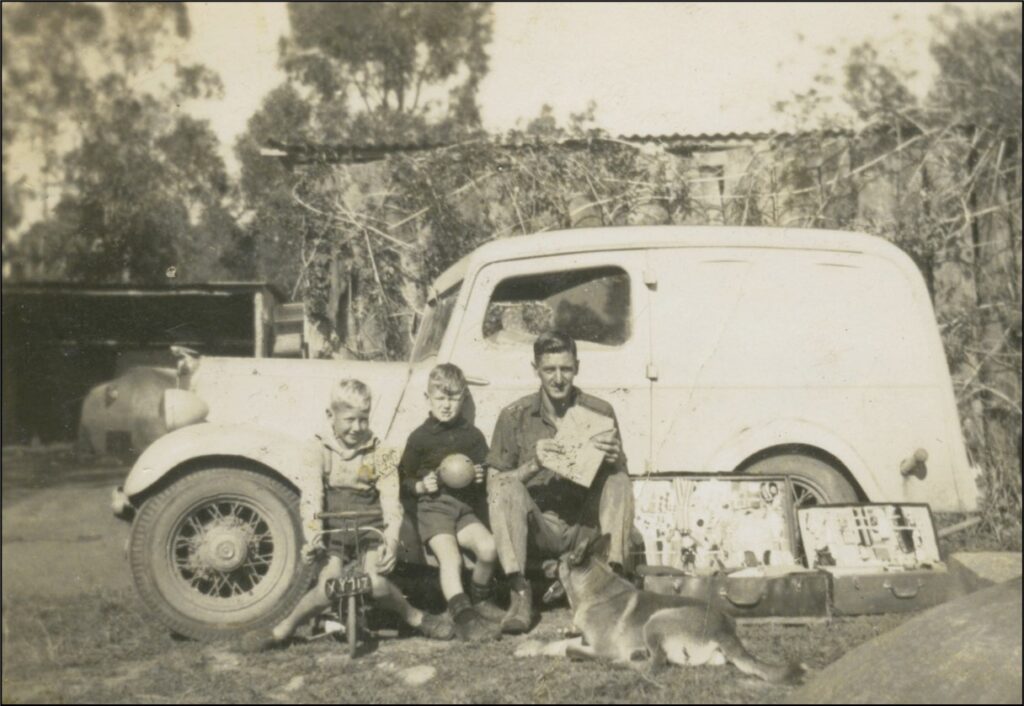by Michelle Nichols
The Hawkesbury district covers a wide area and some inhabitants had to travel long distances to access services. Reliable hawkers with a range of products could make an adequate income and a visit from a hawker was usually met with delight from the female members of the family. A hawker or peddler, carried an array of goods and travelled around from town to town, selling his wares and merchandise. As only a small amount of capital was required, many hawkers started out on foot, carrying their wares. When they had made enough money, they could acquire a horse and cart and travel further afield and with more stock.
A license was required to be a hawker and could be obtained by applying at the local court house. The license provided approval to sell any goods from a stall or vehicle in a public place in New South Wales and a Hawkers Act still exists today. During the 1870s the annual fee was approximately 20 shillings for those travelling by foot and 40 shillings if travelling by horse. The charges varied between localities particularly if the hawker operated close to a town, for instance the fee in Sydney ranged from £1 to £2. Sometimes a bond was required if on horseback, using a cart or boat, and it was necessary for the words ‘licensed hawker’ to be printed on a hawkers box.
Paul Convy, from the Australian Lebanese Historical Society noted that a number of Lebanese migrants hit the road as hawkers in the early days. “The only avenue open to them to make a living was a suitcase full of what used to be called ‘fancy goods’ — ribbons, needles, cotton, lace, razor blades, cloth offcuts, things small enough to be carried in a bag.”
A lifeline to small communities and isolated localities, items sold ranged from agricultural goods to home wares, pots and pans, clothing, suitable trinkets and sometimes exotic goods such as spices and silk. Many Lebanese migrants arrived in Australia and took up the occupation of hawking, walking around the countryside selling goods, and if successful, they then set up businesses.
During the 1890s some renewals of licenses were restricted to British subjects, excluding those originating from Afghan, Assyria and China. During this period, Indian Hawkers became more prolific. An Indian hawker, reported in 1897 that he was robbed of some of his wearing apparel “somewhere in the district.”
Records for hawkers, other than licenses, are sporadic, except when coming to the attention of the local media. One such person was Elias Habeeb or Habbib, a hawker who had been in Riverstone from the 1890s. Elias originally travelled the district with a basket and then in a covered vehicle. In 1893 he was reported on his deathbed but three months later he had recovered and was back on his rounds.
Later that year, Elias left his horse and buggy, near the goods-shed in the Station-yard, when the moving of some trucks by the Mason Bros startled the animal, which made off in the direction of the Meat-works. Mr. S. Mason made every effort to prevent the animal continuing its course, but failed, and the vehicle was capsized near the stock-yard in the Station premises.
Elias eventually opened a store in Riverstone in 1904 but was listed as bankrupt, a few years later.
Henry Saundercock, a resident of Riverstone was granted his hawkers license in 1903. That same year, Thomas H. Schofields also received his hawker’s pack horse license. Eight years later, Saundercock was granted his Auctioneers’ license. He went onto become a well-known businessman in the area.
Micky Azzabox, another Assyrian hawker, was reported in the Windsor and Richmond Gazette in 1919. He was acquitted of assaulting Riverstone inhabitant, Mrs. Mary Jane Showers. Mrs Showers was hospitalized however the hawker was found not guilty and acquitted at Windsor Court House as there was no evidence connecting him to the offence.

Payment of goods could be an issue for the hawkers. They had to outlay for their merchandise and not everyone paid their bills. One licensed hawker who filed as bankrupt, was Richard Abdullah, of Oakville in 1923.
In Riverstone in 1939, Sam Coorey, an Assyrian hawker, was charged with assault of Aubrey Johnson. It was alleged that Coorey went to Johnson’s to collect monies owed to him by Mrs Johnson. She was not at home but two men apparently chased him. There was a disturbance and Johnson was stabbed in the commotion. The outcome of the court case was not noted in the newspapers however he was still listed as a hawker in the mid-1950s.
There were still a few hawkers plying their trades in the 1950s. Bernard Knobbs from Riverstone established a small concern in the mid-1950s. Originally from Ebenezer he saw the need for such a business visiting outlying districts. With several suitcases he set off in his van. Mr Knobbs eventually remodelled a truck and travelled around the Riverstone and Hawkesbury district. He drove around from Riverstone to Oakville, Maroota and through Ebenezer then back home selling Manchester such as sheets, pillowcases and tablecloths, plus clothing, toys and home wares until he retired in the early 1980s, one of the last hawkers in Riverstone.

